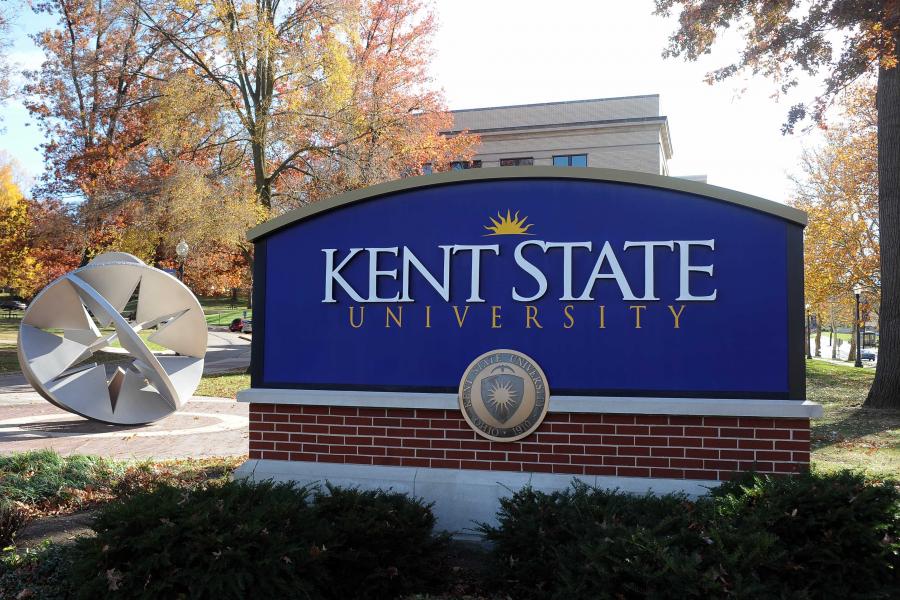College of Arts and Sciences

ąŃ╔½app is merging research with global connections in the Global Understanding Research Initiative (GURI). The recently displayed ŌĆ£We the PeopleŌĆØ and the upcoming ŌĆ£Import/ExportŌĆØ exhibition provide cultural kaleidoscopes with local and international reflectors.

ŌĆ£The pessimistic estimate is that by 2050, antibiotics could be obsolete,'' said Songping Huang, Ph.D., professor in the Department of Chemistry and Biochemistry in the College of Arts and Sciences. Huang and his Kent State team, including Min-Ho Kim, Ph.D., associate professor in the Department of Biological Sciences, are working on closing that chasm with the development of new antimicrobials.

Congratulations are in order for Sooraj Radhakrishnan, Ph.D., a postdoctoral fellow in the ąŃ╔½app College of Arts and SciencesŌĆÖ Department of Physics who performs research in experimental nuclear physics. His data analysis of some rare particles called ŌĆ£charm quarksŌĆØ that may have existed in the first microsecond of the Big Bang, the emerging point of our universe, was highlighted in a recent issue of the .

A liquid crystal research group at Kent State led by Oleg Lavrentovich, Ph.D., is knocking on the doors of the biomedical industry with its current project. The recent publication of research explains a technique of controlling bacteria movement with liquid crystal structures that could have a potential impact in many areas of research and medical care.

Three faculty members in ąŃ╔½app's Department of Biological Sciences recently co-authored a 384-page hardcover book, ŌĆ£Problem Plants of Ohio,ŌĆØ published by the ąŃ╔½app Press.
The ąŃ╔½app College of Arts and Sciences congratulates James A. Tyner, Ph.D., professor in the Department of Geography and Director of the Institute for the Study and Prevention of Violence, who is a 2021 recipient of ŌĆśDistinguished Scholarship HonorsŌĆÖ from the American Association of Geographers (AAG).

Jonathan V. Selinger, professor and Ohio Eminent Scholar in ąŃ╔½appŌĆÖs Department of Physics, in the College of Arts and Sciences, and the Advanced Materials and Liquid Crystal Institute, has been elected a Fellow of the American Association for the Advancement of Science (AAAS), the worldŌĆÖs largest general scientific society and publisher of the journal Science.

Jonathan V. Selinger, professor and Ohio Eminent Scholar in ąŃ╔½appŌĆÖs Department of Physics, in the College of Arts and Sciences, and the Advanced Materials and Liquid Crystal Institute, has been elected a Fellow of the American Association for the Advancement of Science (AAAS), the worldŌĆÖs largest general scientific society and publisher of the journal Science.

While it's no secret that many college students drink alcohol, how COVID-19 affected these behaviors and patterns is the focus of recent research published in the journal Addictive Behaviors by the collaboration of William Lechner from the Department of Psychological Sciences and Deric Kenne from the College of Public Health. The pair sought to study the effects that a major stressor such as the pandemic could have on addictive behaviors and how vulnerabilities such as anxiety and depression played a part in the coping process of college students.

Since March, COVID-19 has become a widespread topic of conversation. Finding ways to explain what this virus is, how one can treat it and how to slow the spread of the virus are just a few commonly asked questions with few clear answers. Xiaozhen Mou, associate professor in the Department of Biological Sciences, and her research team recently received funding for their hard work as part of OhioŌĆÖs statewide collective effort to discover traces of COVID-19 virus particles in wastewater.